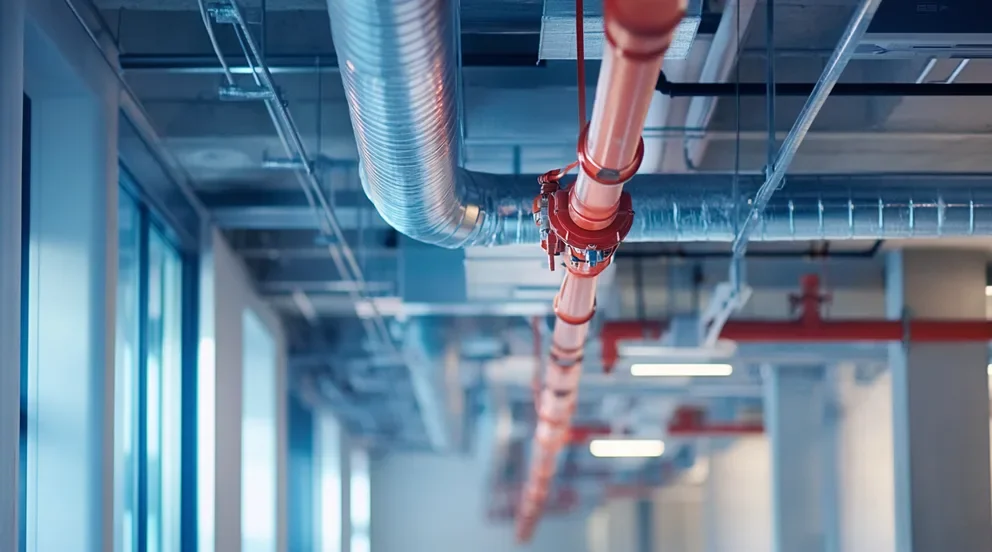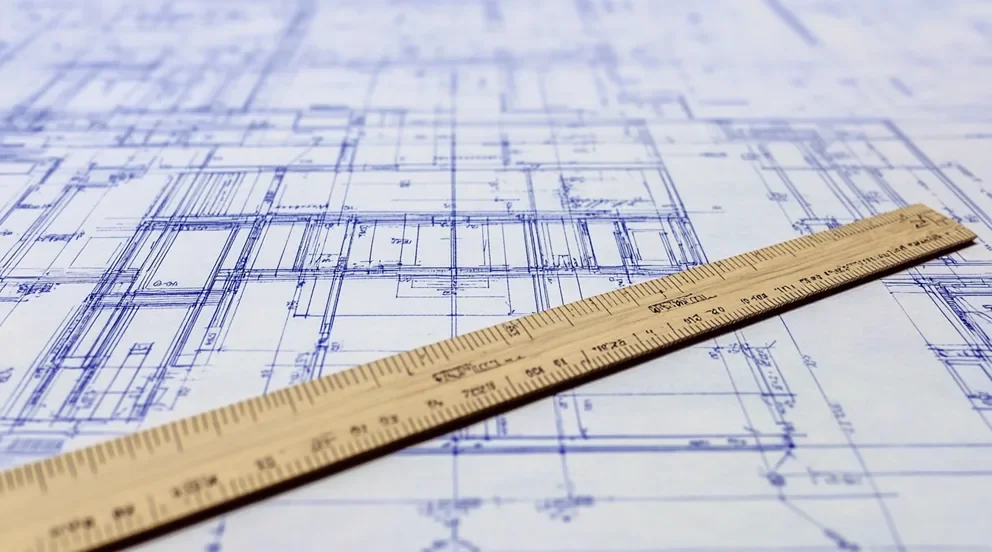Routine maintenance in commercial and industrial CMMS (Computerized Maintenance Management Systems) represents a systematic approach to prevent potential equipment failures and ensure smooth operations. It involves regular inspections, cleaning, repairing, and replacement of equipment parts to maintain the highest level of performance.
The process usually begins with a thorough inspection of the equipment. Skilled technicians assess the current condition of machinery, looking for signs of wear and tear, and identifying potential issues. They document their findings in the CMMS, which provides a centralized repository of all equipment information.
Following inspection, the cleaning stage takes over. It involves removing dust, dirt, and other particles that may interfere with the equipment’s operation. This simple practice can significantly extend the life of machinery and improve overall efficiency.
The repair phase, crucial in routine maintenance, addresses minor faults before they escalate into major problems. Technicians replace worn-out parts, tighten loose components, and adjust settings to optimize performance. All these activities are accurately recorded in the CMMS for future reference and analysis.
Finally, equipment parts with significant wear and tear are replaced to prevent sudden breakdowns. The CMMS system maintains an inventory of spare parts, facilitating quick and efficient replacements.
How can CMMS help track performance and condition of equipment?
A Computerized Maintenance Management System (CMMS) acts as a critical tool for tracking the performance and condition of equipment. It creates a comprehensive record of all machinery, allowing managers to monitor performance effectively.
When equipment data is fed into a CMMS, the system can analyze and report on key performance indicators (KPIs). This includes tracking the efficiency of machinery and identifying any slowdowns or periods of downtime. By doing so, it allows managers to take proactive steps to improve equipment performance before significant issues arise.
Additionally, a CMMS documents the condition of each machine. It keeps track of service, repairs, and preventive maintenance. This allows management to identify any necessary corrective actions before equipment breaks down completely, minimizing the risks of costly downtime. CMMS also makes it easier to plan maintenance schedules and assign resources according to the age and condition of each piece of equipment.
CMMS is not limited to tracking machines only; it can also review staff performance. It allows managers to track employee attendance, project completion rates, and skills tracking. This provides insight into the effectiveness of an organization’s workforce and provides a basis for making improvements where necessary.
Overall, a CMMS is an invaluable tool for managing and monitoring any business that relies on machinery or equipment. Its use of data-driven insights and analytics helps to ensure the performance and reliability of equipment, and its ability to track staff performance makes it an essential part of any organization.
CMMS provides businesses with the data they need to maintain a competitive edge in their industry. With its comprehensive reporting capabilities, managers can make more informed decisions about how best to spend company resources and focus efforts on areas that will have the biggest impact.
What are the best practices for logging maintenance activities in the CMMS?
Regular logging of maintenance activities in a Computerized Maintenance Management System (CMMS) ensures efficiency and reliability. Here are some best practices.
1. Consistency is key. Always log maintenance tasks as soon as they are completed. This keeps the data current and reflects the most recent state of assets.
2. Be thorough and detailed. Details should include the type of task, the time taken, materials used, and the personnel who performed the task. This offers a comprehensive view of the maintenance process.
3. Utilize categorization. Group related tasks together. This helps to identify patterns and trends, aiding in better resource allocation.
4. Ensure accuracy. Always double-check entries for errors. Accuracy in logging tasks leads to more effective maintenance strategies.
5. Leverage automation. Whenever possible, automate the logging process to minimize human errors and increase efficiency.
6. Include preventive maintenance. Regularly schedule preventive tasks and log them. This helps to prolong equipment lifespan and avoid costly breakdowns.
7. Record training activities. Document any training provided to the maintenance staff. This helps in identifying skill gaps and training needs.
8. Perform regular audits. Regular audits of the CMMS logs ensure data accuracy and completeness. It also helps to identify any discrepancies and rectify them promptly.
Remember, the goal of using a CMMS is to streamline maintenance activities and make informed decisions. Following these best practices can lead to improved asset reliability and operational efficiency.
How can we use CMMS to predict and prevent machine breakdowns?
A Computerized Maintenance Management System (CMMS) is a powerful tool for predicting and preventing machine breakdowns. It collects and analyzes data, enabling teams to foresee potential issues and act proactively.
CMMS tracks machine performance over time, producing valuable trends and patterns. When a machine’s performance deviates from the norm, the system flags it. This signals maintenance teams, prompting them to check the machine before a minor hitch becomes a major breakdown.
Preventive maintenance is another key feature of CMMS. The system schedules routine checks and maintenance tasks, ensuring machines stay in peak condition. This reduces the likelihood of unexpected breakdowns, saving both time and resources.
A CMMS also helps manage spare parts inventory. By monitoring the usage rates of different parts, the system ensures the right parts are always in stock. This means less downtime waiting for parts when a machine does require repairs.
Moreover, a CMMS houses a wealth of historical data. It records each machine’s maintenance history, including breakdowns and repairs. This archive of information can be used to identify recurring issues and develop long-term solutions.
Most importantly, a CMMS isn’t just reactive – it’s predictive. The system uses machine learning algorithms to analyze data and predict potential future failures. This allows teams to address problems before they occur, enhancing machine longevity and reliability.
What kind of reports can be generated from the CMMS to analyze the efficacy of routine maintenance?
A Computerized Maintenance Management System (CMMS) can generate a variety of reports that help analyze the efficacy of routine maintenance. One key report is the Work Order Analysis. This report provides insights into the number of work orders completed, the time taken for each order, and the resources used. It can highlight potential inefficiencies in the maintenance process.
The Preventive Maintenance Compliance report is another vital tool. It measures the percentage of preventive maintenance tasks completed on time. An upward trend in this report indicates a successful routine maintenance program.
Next, the Equipment Failure report identifies equipment that fails frequently. By analyzing this report, decisions can be made to replace or upgrade the equipment, improving overall maintenance efficacy.
Equipment Downtime Analysis is a report that showcases the amount of time each piece of equipment is not operational. It helps assess the impact of maintenance on productivity.
The Maintenance Backlog report gives a clear picture of the number of outstanding work orders. A consistently high backlog may indicate that the routine maintenance schedule needs revising.
Finally, the Mean Time to Repair (MTTR) report offers information on the average time taken to repair equipment. This report can reveal whether the maintenance team is working efficiently.
How can the CMMS help in managing inventory required for routine maintenance tasks?
A Computerized Maintenance Management System (CMMS) is a powerful tool in managing the inventory required for routine maintenance tasks. It provides a centralized platform to track and manage all maintenance-related inventory, reducing the likelihood of stockouts or overstocking.
Using a CMMS simplifies the process of tracking inventory levels. It keeps a record of all items, including where they’re stored and when they’re due for replenishment. With this information, a CMMS aids in avoiding unexpected stock shortages, ensuring that maintenance tasks do not get postponed due to lack of necessary parts.
A CMMS also assists in achieving optimal inventory levels. It can analyze usage patterns over time and predict future needs, preventing overstocking. This approach results in substantial cost savings as it eliminates unnecessary expenditure on seldom-used parts.
Another key benefit of a CMMS is its accuracy in preventive maintenance scheduling. It can alert the team whenever a certain component is due for replacement based on usage or time, allowing for timely maintenance. This proactive approach minimizes equipment downtime, enhancing productivity.
Additionally, a CMMS promotes accountability and transparency. It records every transaction, providing a clear audit trail. Such visibility into inventory movements helps in identifying any discrepancies and resolving them promptly.
Lastly, a CMMS fosters informed decision-making. It generates comprehensive reports on inventory usage, costs, and trends. These insights enable the management to make strategic decisions regarding inventory procurement and usage.
Can the CMMS integrate with other systems to enhance routine maintenance procedures?
A Computerized Maintenance Management System (CMMS) indeed has the capability to integrate with other systems, significantly enhancing routine maintenance procedures. It can connect with Building Management Systems (BMS), or Enterprise Resource Planning (ERP) systems, for instance. This integration allows data to flow seamlessly between the platforms, optimizing maintenance operations.
A striking advantage of this integration is the real-time sharing of information. This means that as soon as a fault is detected in a system, the CMMS receives this information and triggers the necessary maintenance processes. This immediate relay of data helps in swiftly addressing the issues, minimizing downtime.
The integration also aids in better planning and scheduling of maintenance tasks. By pulling data from other systems, the CMMS can predict potential equipment failures and schedule preventive maintenance, thus avoiding unexpected system breakdowns.
Additionally, with integration, a CMMS can automate parts of the inventory management process. It can keep track of spare parts usage, manage reordering processes, and ensure there is no shortage of critical parts or excess stock.
Finally, integrating a CMMS with other systems can improve reporting and analytics. It can merge and process data from different sources, providing insights that would not be possible with standalone systems. This can aid in informed decision-making, enhancing the overall efficiency of maintenance operations.
What’s the role of CMMS in ensuring compliance with maintenance standards and regulations?
A Computerized Maintenance Management System (CMMS) plays a pivotal role in keeping organizations aligned with maintenance standards and regulations. It takes the complexity out of compliance by centralizing essential data, streamlining workflows, and automating processes.
A CMMS makes it easy to track and manage assets, reducing the risk of non-compliance. It provides a clear record of all assets, their maintenance history, and any scheduled or unscheduled tasks. This database aids in quick retrieval of information during an audit, demonstrating adherence to prescribed standards.
Moreover, it schedules periodic maintenance tasks, ensuring no vital checks get overlooked. By automating maintenance schedules, a CMMS helps to maintain equipment in optimal condition, mitigating failures that could lead to regulatory violations.
A CMMS also assists in documenting regulatory compliance. Through its robust record-keeping capabilities, it maintains a detailed log of all maintenance tasks, inspections, and repairs. This transparency allows organizations to prove compliance in case of inspections or audits.
The system also facilitates employee training, a key aspect of compliance. It can track employees’ certification status, schedule training sessions, and remind staff of upcoming renewals, ensuring the workforce is always competent and updated.
Furthermore, a CMMS serves as a crucial tool in maintaining safety standards, a significant aspect of compliance. It aids in establishing safety procedures, managing safety documentation, and tracking incidents, thus fostering a safer work environment.
Key Takeaways:
– A CMMS simplifies inventory management by tracking levels, predicting future needs, scheduling preventive maintenance, promoting accountability, and fostering informed decision-making.
– Integration of a CMMS with other systems like BMS and ERP optimizes maintenance operations by allowing real-time data sharing, predictive maintenance scheduling, automated inventory management, and improved reporting and analytics.
– The role of a CMMS in ensuring compliance with maintenance standards and regulations includes tracking and managing assets, scheduling maintenance tasks, documenting regulatory compliance, facilitating employee training, and maintaining safety standards.



